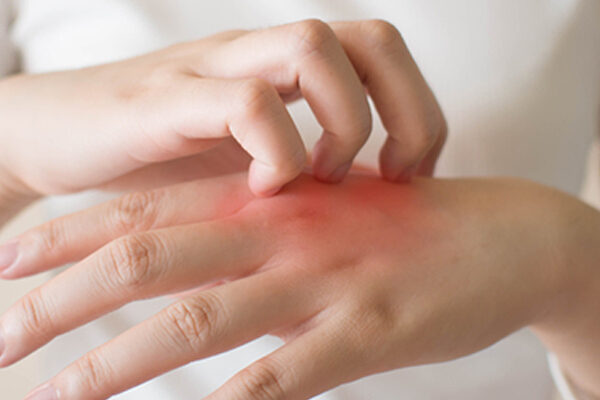Introduction:
Spongiotic dermatitis is a type of inflammatory skin condition that causes a buildup of fluid beneath the skin. The extra fluid causes swelling between the skin’s cells.
It is a broad term that describes a variety of skin conditions. It is frequently linked to eczema and other types of dermatitis, presenting itself with dry, red, itchy, and cracked skin. This skin disease can be localized or widespread.
The purpose of this blog is to provide an overview of spongiotic dermatitis, including symptoms, foods to avoid, causes, and possible treatment options, and explore ways how will spongiotic dermatitis go away.
Also read: Is Eczema An Autoimmune Disease or Something Else?
About the Spongiotic Dermatitis:
Spongiotic dermatitis is a chronic skin condition that typically affects the chest, abdomen, and buttocks. It is characterized by outbreaks of small, itchy red blisters that, when scratched, ooze and scar. Exposure to an allergen usually causes outbreaks of the condition, which can affect both children and adults.
The presence of intercellular edema, histologically manifesting an increase in the intercellular space between keratinocytes (skin cells), is a distinguishing feature of spongiotic dermatitis. In most cases, lymphocytes are broken down and moved into the epidermis.
Also read Psoriasiform Dermatitis: Causes, Symptoms, and Treatment Approaches.
Subacute Spongiotic Dermatitis:
Subacute spongiotic dermatitis, also known as subacute eczema, represents a less severe form of dermatitis when compared to acute or chronic instances. Those experiencing subacute eczema may display symptoms such as itchiness, redness, and inflammation of the skin.
Typically, subacute spongiotic dermatitis presents with redness, swelling, and itching in the affected region, accompanied by dryness, scaliness, and the presence of small blisters or oozing. Common areas affected by this condition include the face, neck, hands, as well as the inner elbows or areas behind the knees.
What are the Symptoms?
Some common symptoms include:
- Severe itching due to dry, scaly skin
- Rashes particularly on the hands, inner elbows, and behind the knees
- Blisters caused by rashes, which may produce fluids in severe cases
- Red, inflamed skin from constant scratching
What Causes Spongiotic Dermatitis?
Typically, exposure to an allergen causes outbreaks of spongiotic dermatitis. But it can be challenging to pinpoint the source of an outbreak because exposure to a variety of allergens can result in spongiotic dermatitis. There is a long list of substances that may trigger this condition. However, the exact cause is unknown, but it appears to be related to a combination of genetic and environmental factors. These factors are usually considered when administering a spongiotic dermatitis treatment option.
Potential allergens include:
- Allergic reactions to certain medications or foods
- Contact with irritants, such as chemicals, certain cosmetic ingredients, or certain metals in jewelry
- Fungus infection
- Stress can weaken your immune system and lead to breakouts
- Alterations in hormone levels
- Temperature or weather conditions change
What Autoimmune Disease Causes Spongiotic Dermatitis?
Even though psoriasis and spongiotic dermatitis are two different diseases, they do share some symptoms. Skin cells multiply more quickly than usual when someone has psoriasis, an autoimmune skin condition.
Psoriasiform spongiotic dermatitis is a condition that can develop from severe cases of psoriasis. Psoriasis and spongiotic dermatitis symptoms are combined to form the symptoms of this condition. It is thought that individuals with this condition may have a gene mutation that results in a protein called filaggrin. This protein aids in keeping the skin’s outermost layer’s protective barrier in place. Lack of filaggrin weakens the skin barrier, allowing moisture to escape and more bacteria and allergens to enter.
Also read: Seborrheic Dermatitis vs Psoriasis: What’s the Difference?
Spongiotic Dermatitis Foods to Avoid:
Certain foods can cause the body to release immune system mediators that cause inflammation in people who have food allergies or sensitivities. These, in turn, may be what causes spongiotic dermatitis flare-ups. Eliminating particular food groups from the diet may help people living with this condition.
Foods that may cause flare-ups to include:
- Milk and other dairy products
- Eggs
- Soy
- Wheat
- Peanuts
- Shellfish or fish
- Rice
- Oil or sesame seeds
However, before assuming that a specific food or food group is causing the flare-ups and eliminating it from your diet completely, consult an allergist or dermatologist. They will do the following at your appointment to judge the best possible spongiotic dermatitis treatment option:
- Perform a physical examination and take a thorough medical history.
- Inquire about the location and timing of flare-ups.
- Perform blood or skin tests to determine whether common food triggers cause reactions.
- Suggest steps to eliminate potential food triggers and evaluate the results.
- Prescribe a treatment to relieve skin irritation and itching.
If the skin tests come back positive, the next step is to eliminate those foods from your diet or what causes spongiotic dermatitis.
Complications of Spongiotic Dermatitis:
During severe flare-ups, if you scratch an itchy rash a lot, your skin can crack, and blisters may leak, which can cause skin infections. If you keep scratching, the skin can become thicker, a process called lichenification. This thickened skin might feel itchy all the time, even when the condition isn’t active.
Spongiotic Dermatitis Treatment:
While there is no cure available, people can treat flare-ups with medications, following a healthy skincare regimen, and lifestyle changes.
The following are some possible spongiotic dermatitis treatment options that may help manage the condition:
- Moisturizing daily and washing with a moisturizing body wash instead of soap may also help.
- Avoiding soaps, shower gels, and detergents, which can irritate the skin further.
- Applying topical steroid creams to reduce redness and itching. Use the appropriate or prescribed medication, as using one that is too strong may result in skin thinning.
- Using topical calcineurin inhibitors, such as tacrolimus ointments and pimecrolimus creams, to control inflammation during flare-ups. These medications inhibit a chemical that causes skin inflammation and causes redness and itching.
- Taking antihistamines to alleviate allergy symptoms. Non-drowsy antihistamines are less likely to cause fatigue.
- Wearing bandages, dressings, or wet wraps over creams to prevent ointment from rubbing off and scratching. Wet wraps should not be used on babies or children because this can cause their body temperatures to drop.
- Phototherapy, or the use of ultraviolet light. This therapy is not typically recommended for children. Natural sunlight can help with some skin conditions by reducing inflammation.
- Oral steroids, such as prednisolone, can help alleviate symptoms during severe or widespread flare-ups. Steroids must be prescribed by a doctor or dermatologist.
Will Spongiotic Dermatitis Go Away?
“Will spongiotic dermatitis go away?” Answering the question may not be as easy as it seems. It is imperative that you follow certain preventive methods. This will help to relieve the discomfort of spongiotic dermatitis and reduce the likelihood of future flare-ups. Some of these preventive methods may include the following:
- Maintaining a daily skincare routine. This includes moisturizing on a regular basis and using prescribed medications or treatments.
- Keeping potential triggers at bay. Certain foods, cosmetics, detergents, and animal species may fall into this category.
- Wearing non-rubber gloves to protect one’s hands while performing manual tasks such as housework.
- Avoid scratching the affected area of the skin. Scratching can cause additional damage or infection.
- Wearing materials that are soft and breathable, such as cotton. Avoid itchy fabrics, such as wool.
- Using non-biological laundry powder to wash clothes. To remove detergent residues, run a double rinse cycle.
- Maintaining skin temperature. Itching can be exacerbated by overheating and sweating.
- Take care of symptoms as soon as they appear. Flare-ups become more difficult to control as they worsen.
Also read: All You Need To Know: What Causes Eczema Flare-ups?
Takeaway:
Living with spongiotic dermatitis can be a constant challenge. Symptoms may disappear quickly or become chronic. A person’s diet is not always the trigger, however, some people may notice that their symptoms improve when they make dietary changes.
Because this condition is not contagious, there is no risk of contracting it from someone else. Spongiotic dermatitis, while difficult, is also treatable. A treatment plan that includes medication, a healthy skincare routine, and lifestyle changes can help to relieve symptoms and reduce the risk of future flare-ups.







